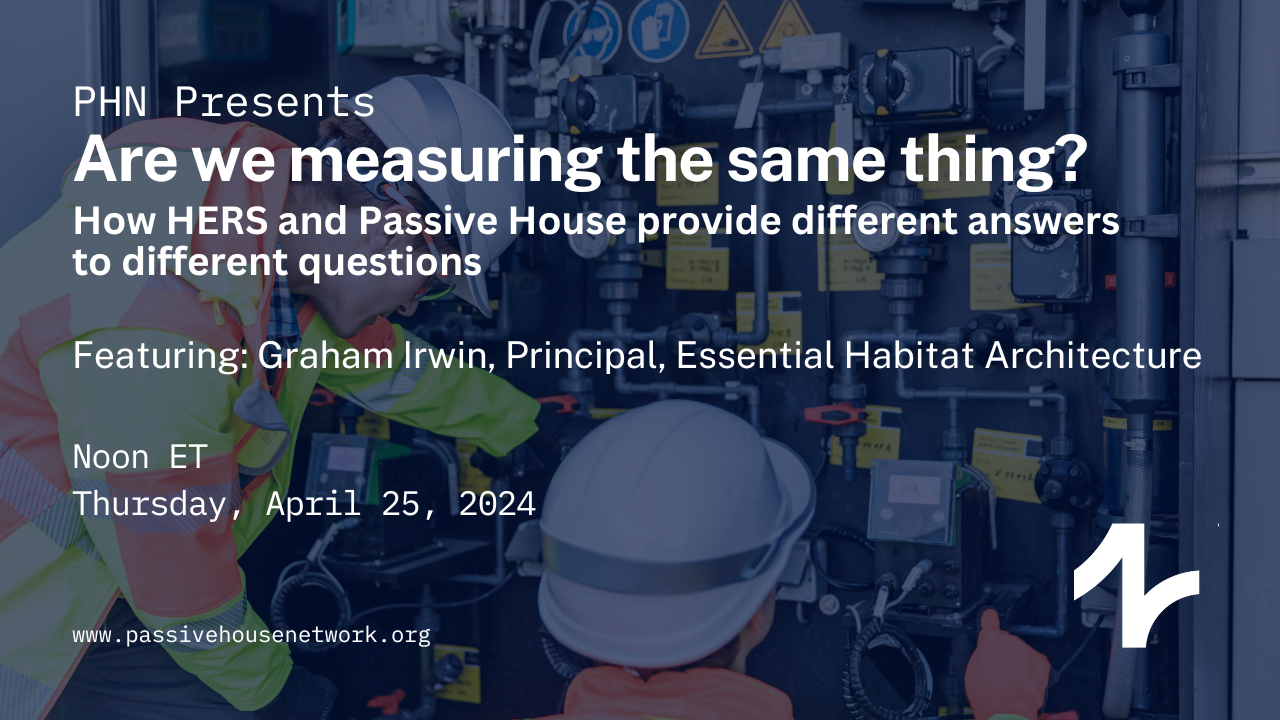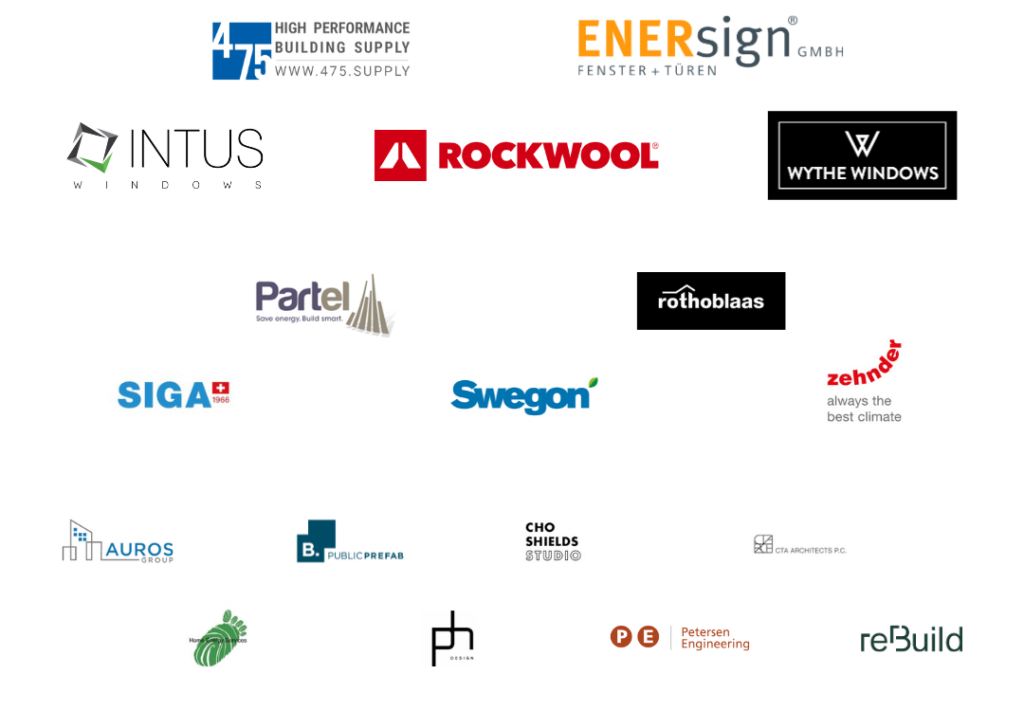Are We Measuring the Same Thing? How HERS and Passive House Provide Different Answers to Different Questions
Noon ET, Thursday, April 25, 2024
The “Home Energy Rating System (HERS) Index is a nationally recognized metric for residential energy efficiency that’s integral to numerous government programs and financial incentives. Yet the HERS results of Passive House buildings leave practitioners scratching their heads, as powerful Passive House Performance levers sometimes barely budge the HERS needle. To demystify their relationship, this presentation compares the two methodologies side-by-side and illustrates, using a single-family home, where and how they diverge and why. The results may surprise you. Find out why-and find out how you and your Passive House team can be successful and co-exist with HERS going forward. Join the conversation!
Featured Presenter: Graham Irwin, AIA, NCARB, is the principal of Essential Habitat Architecture, a northern California design firm dedicated to distinctive, modern, high-performance homes that meet or exceed passive building standards. Graham was the first certified Passive House Consultant in California (among the first trained in the US) and was a founding board member of Passive House California and the Passive House Alliance, US (PHAUS). He’s worked on numerous single-family, multi-family, and commercial Passive House projects, including the first certified Passive House in California, the first certified Passive House retrofit in the US, the first certified multi-unit Passive House in the US, and the 1,000,000th square meter of certified Passive House in the world.
CEU Credits: In Progress
Learning Objectives:
- Outline the primary components of HERS ratings and Passive House standards.
- Explain how the priorities of HERS and Passive House evaluation diverge.
- Describe how divergent priorities affect the resulting energy performance evaluations.
- Outline how Passive House teams can successfully co-exist with HERS.



